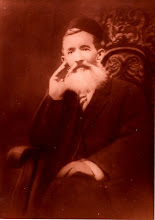That most famous of autism icons, Temple Grandin, (whom I like to call Temperamental Grandiose just for fun), is in the news once again . A research group in Utah has done a variety of studies on her brain in addition to giving her various tests. They used three controls who were matched for age, sex and hand dominance to draw a comparison between Grandin's brain and a typical brain.
One of the findings was an increased brain volume in comparisons to controls. However, this is probably nothing new as Courchesne's group and I think a variety of other researchers has found enlarged brains in those with autism.
Grandin's lateral ventricles, which hold the brain's cerebrospinal fluid, are skewed, the left one being much larger than the right.
Her amygdala, the area of the brain responsible for anger and rage responses and suppressing sexual desire, is enlarged in both hemispheres. (I wonder if this might explain her stated desire for celibacy :))
The researchers also found a higher volume of white matter on the left side of her brain as well as enhanced white matter connections in various parts of her brain.
Among the most interesting of the findings (at least to me) were weak and compromised connections in the left frontal gyrus, which includes Broca's area for speech. She was also found to have impaired connections in the right fusiform gyrus which is the area for face recognition. This has relevance as one of the symptoms of autism (which occurred in both Grandin and myself) is a speech delay or language impairment prior to age 36 months. Also, many autistics, myself included, have problems recognizing others' faces.
I remember reading someplace else (I'm not sure if it was Thinking in Pictures or an article she wrote) that many years ago, Grandin had an MRI scan showing abnormalities of certain parts of the cerebellar vermis that I had when I underwent a scan by Eric Courchesne's research group many years ago. These were not mentioned in this study.
The knowledgeable neuroscience blogger, The Neurocritic, has given his take on the study . He writes about another talented autistic savant, a 63-year-old man with extraordinary musical abilities, perfect pitch, as well as in several languages and art. Similarly to Grandin, he also had an enlarged amygdala on both sides of his brain. Unlike Grandin, he was not terribly successful educationally and professionally and was only able to obtain employment as a dishwasher. So, one has to wonder how the similarities in brain findings of the opposite sex, though like in age (Grandin was also 63 at the time of her scans) relate to someone who had different gifts than Grandin but was not able to utilize his gifts in order to garner gainful employment.
Interestingly, one study showed a positive correlation of increased amygdala size and greater sized social networkings in neurotypical college students. Neurocritic also mentions another study in which researchers suggested there was a correlation between amygdala size and number of Facebook friends college students had.
The increase in amygdala size among autistics is nothing new, as the Neurocritic cites two studies in the above-linked blog post where researchers found this in other persons with autism (most likely Joe Blow regular auties without Grandin's and the dishwasher's savant skills).
Brain studies have shown enlarged amygdala's in persons with anxiety disorders and even right wing political beliefs. So what to make of Grandin's enlarged area of this brain nucleus?
Impairments in Broca's area have also been found in mirror neuron studies of autism as well as Courchesne's now year-old study showing the increased number of neurons in this area.
Fewer and smaller neurons in regular non-savant autistics in the fusiform gyrus in autistics were found in yet another study.
Also, the fact that three controls may not be enough to tell us anything may be germane.
Anything new here elucidating on the autistic brain or Grandin's so-called savant skills? I don't think so.
Subscribe to:
Post Comments (Atom)


No comments:
Post a Comment